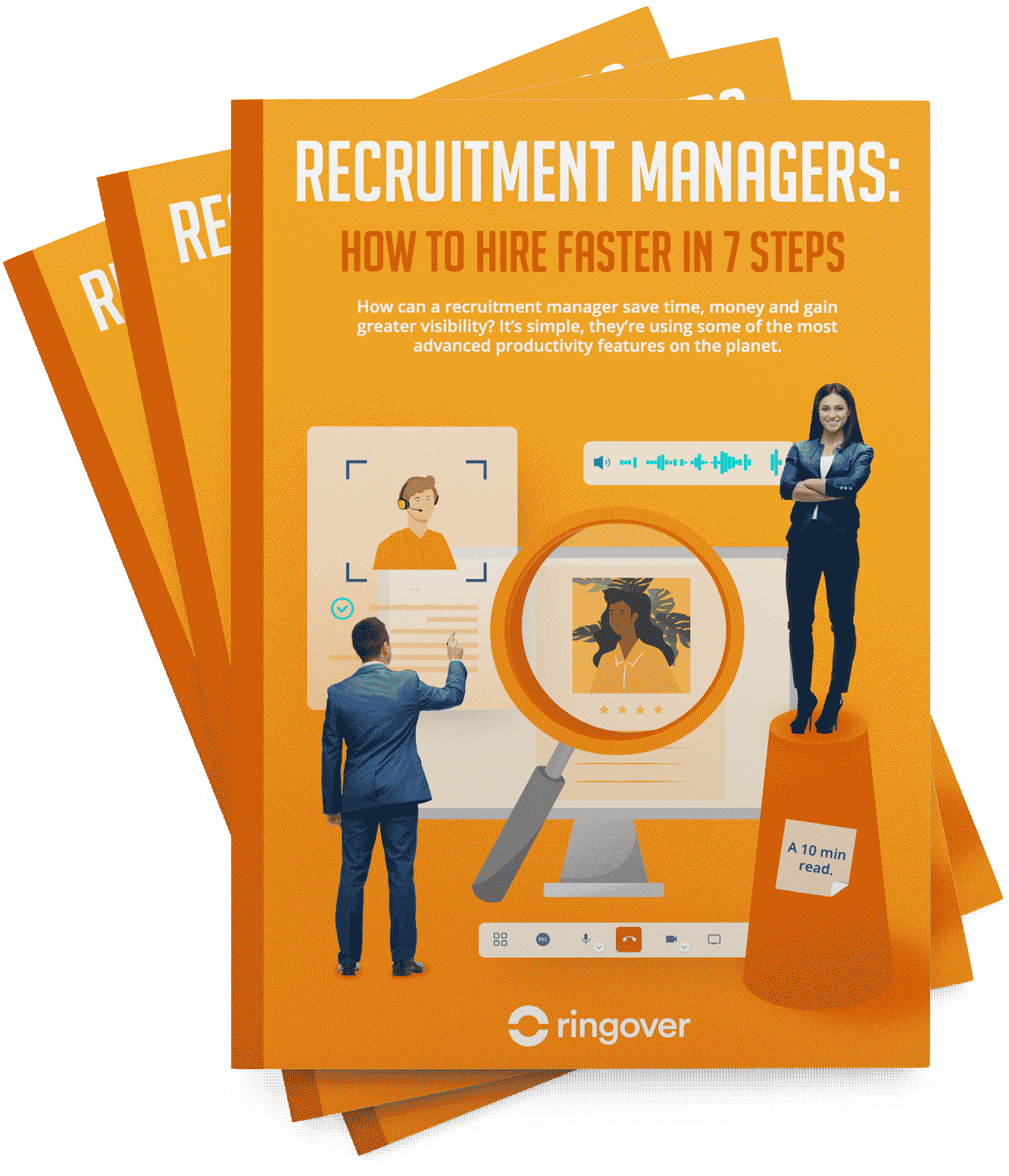Summary
If you're curious about what recruiting tasks can be automated and which software is the best, check out the following list of the best recruiting automation tools.
Top 18 recruiting automation software
| Recruiting Automation Software | Features | Pricing |
|---|---|---|
| Cadence by Ringover | Automate recruitment prospecting with sequences, multichannel communications, templates, integrations | £69 per user/month |
| Ringover | IP telephony providing multichannel communication, unlimited calling to 110+ destinations, IVR menus, analytics and more | There are three plans available, the Smart plan at £19 per user/month, the Business plan at £39 per user/month, and the Advanced plan at £49 per user/month |
| LinkedIn Recruiter | Search and filter for candidates, leverage recommendations | A basic service begins at about £170 per month, with a cap on the amount of users |
| Indeed Hiring Platform | Find and manage potential candidates | You can set a budget to sponsor your hiring posts, or contact them for a more comprehensive plan |
| SmartRecruiters | Hiring platform with an ATS, recruitment marketing, candidate assessment, and other tools to manage other aspects of the hiring process | Price is on request only |
| Zoho Recruit | A combined ATS and recruitment CRM | Choose from a free tier, £30, £60, or £90 per user/month |
| Vincere | A recruitment CRM that automates tasks and provides an analytics dashboard | Prices begin at about £100 per user/month |
| Manatal | Post on multiple job boards, hiring pipeline, AI-supported candidate recommendations | Three plans at £19 and £39 per user/month, and a third tier with price on request |
| Paradox | Conversational AI chatbot with ATS functions | Price on request only |
| hireEZ | Access to millions of profiles, increase candidate engagement | Price on request only |
| SourceWhale | Personalizable sequences, hiring pipeline analytics | Price on request only |
| Emi | Automate interview scheduling, candidate selection, administrative tasks | Price on request only |
| Jobylon | Career webpages, marketing recruitment, automatic translation | Price on request only |
| HireVue | Text recruiting, game-based assessments, screening at scale | Price on request only |
| SeekOut | Aggregate profiles, multiple filter options, options to search for tech candidates | Price on request only |
| Recruit CRM | Hiring pipeline, emails, limited calls, posting on job boards | Three plans are available at £100, £150, and £165 per user/month |
| TurboHire | High-volume hiring funnel, automated screening, automated outreach through text and email | Price on request only |
| Fetcher | Automatic candidate sourcing, email sequences, analytics dashboard | Three plans are available, with a free tier, a second tier at £199, and a third tier at £649 per user/month |
1. Cadence by Ringover
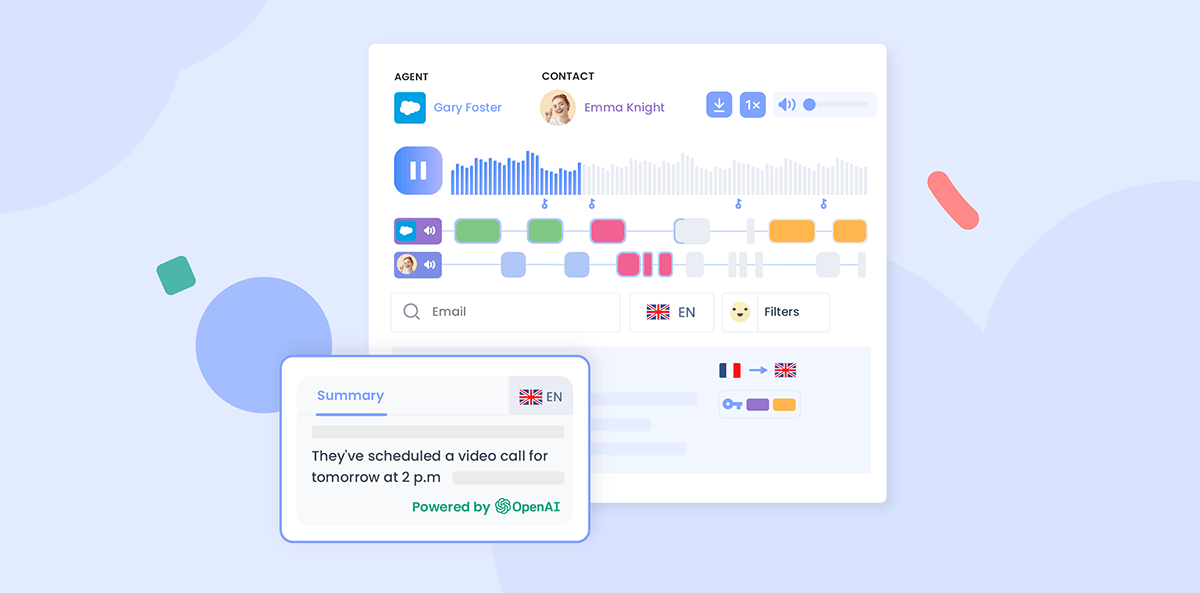
Cadence automates various aspects of the recruitment process so recruiters spend less time on administrative tasks and can instead invest in candidates in a more meaningful way.
This sales automation software allows for teams to send automated outreach sequences to nurture candidates and ensure they don't slip through the cracks. The software supports multi-channel communications, so you can reach the potential employee on the channel they prefer. Not to mention, the software includes messaging templates. With these at hands, recruiters will be able to personalise outreach, with the bones of their message based on proven methods.
Once the candidate's information is logged in Cadence, the potential employee will be in a pre-configured hiring pipeline with a sequence of semi-automated steps. The recruiters will receive daily to-do lists which guide them to which candidates are due for outreach or who have advanced through the process. No more candidates slipping through the cracks!
2. Ringover

With Ringover, you'll have access to advanced business communications features so you can efficiently manage interactions with potential employees. There's a selection of functions that ensure you'll never miss a call from a candidate. For example, you can set up call routing and call forwarding to ensure the candidate always reaches an available person. If you set up an interactive voice response (IVR) menu, callers can navigate their way through the available options to access the person or information they need.
When it comes to optimising your team's performance, Ringover offers several options. You can utilise call monitoring or call recording to take notes on how a recruiter handles candidate interviews and negotiations. This way, you'll be able to pinpoint the specific actions or talking points that can have a strong positive effect. And once you've taken measures to optimise performance, Ringover provides an intuitive analytics dashboard so you can track progress and ROI.
3. LinkedIn Recruiter

LinkedIn leverages the data provided by its social media platform users to help recruiters source and connect with candidates. The more advanced features of the tool also allow you to track the interactions candidates have with your teams, so you can move smoothly through the process.
4. Indeed Hiring Platform

Indeed offers several products that support the hiring process. The service will help you promote job offers, manage your reviews and other employer branding material on Indeed and Glassdoor, and find the right candidates by parsing through candidates.
5. SmartRecruiters

SmartRecruiters is a hiring platform that's suitable for companies with enterprise needs. The service covers every aspect of the hiring process, from advertising and posting offers, to creating a careers website, to providing multiple communication channels like chatbots and text messaging.
6. Zoho Recruit
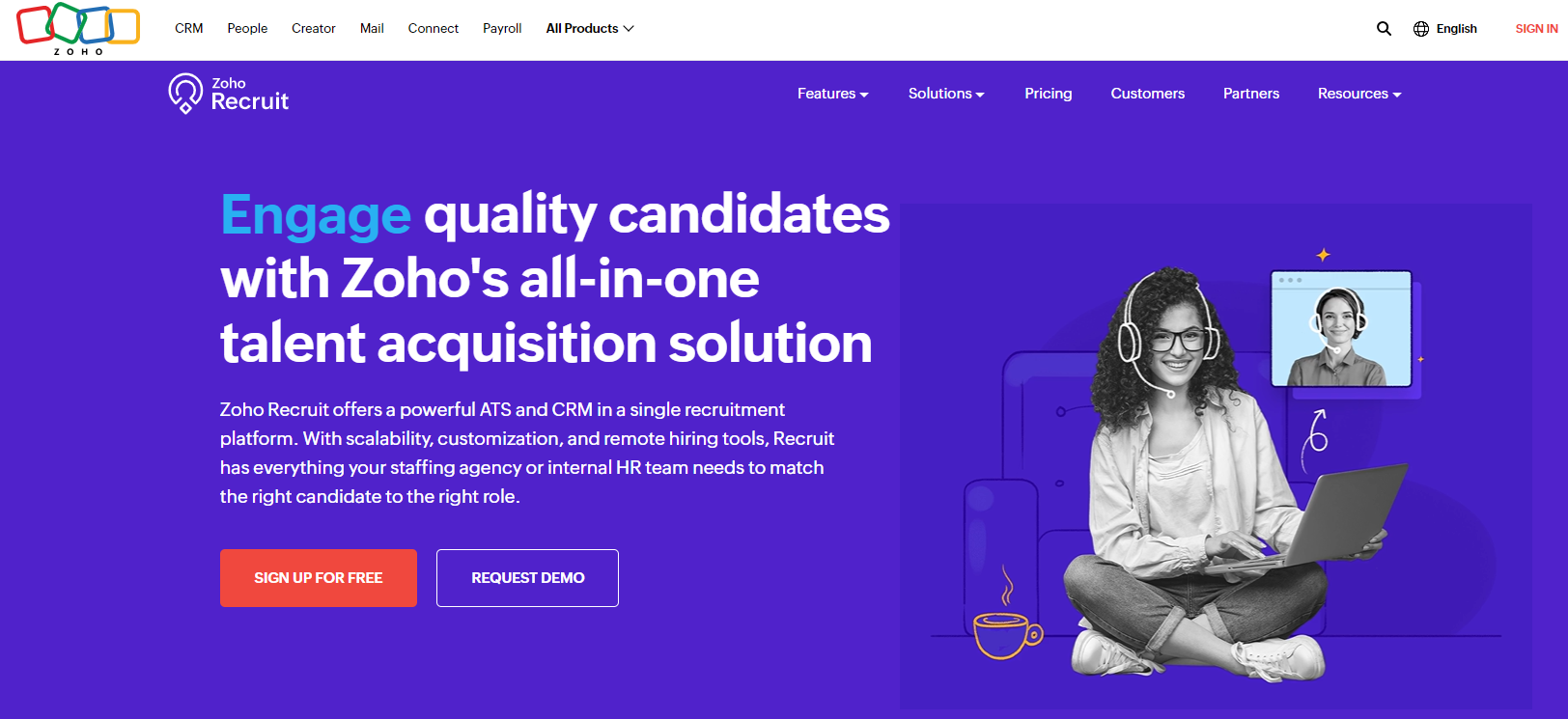
An ATS focused on the candidate experience which integrates seamlessly with Zoho's premier product, a CRM. The idea with Zoho Recruit is to create a great experience for candidates, which will then remain consistent as they transition to employees.
7. Vincere
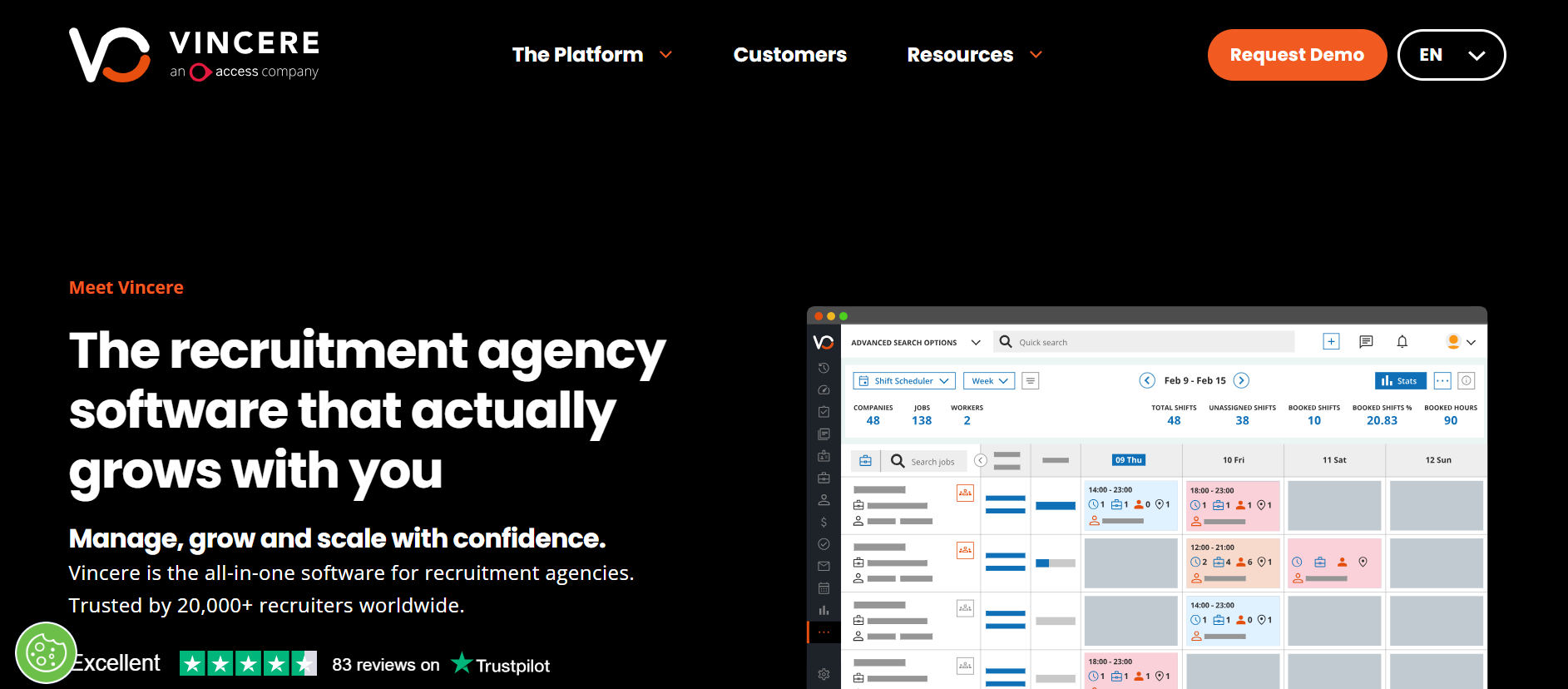
Vincere is a suite of recruitment tools with several functionalities, spanning from applicant tracking, candidate relationship management, and more. Once you've deployed this solution, you'll have numerical data to understand its effect thanks to reporting capabilities and an analytics dashboard.
8. Manatal

If you're struggling to manage the flow of candidates through your hiring process, Manatal offers features to help with that. You can use this software to sort resumes, schedule interviews, track applicants, and set up a workflow management.
9. Paradox

Paradox focuses on bringing personalization and automation to recruiting processes. The software achieves this objective by offering chatbots, automating interview scheduling, and using AI technology to screen and sort resumes.
10. hireEZ
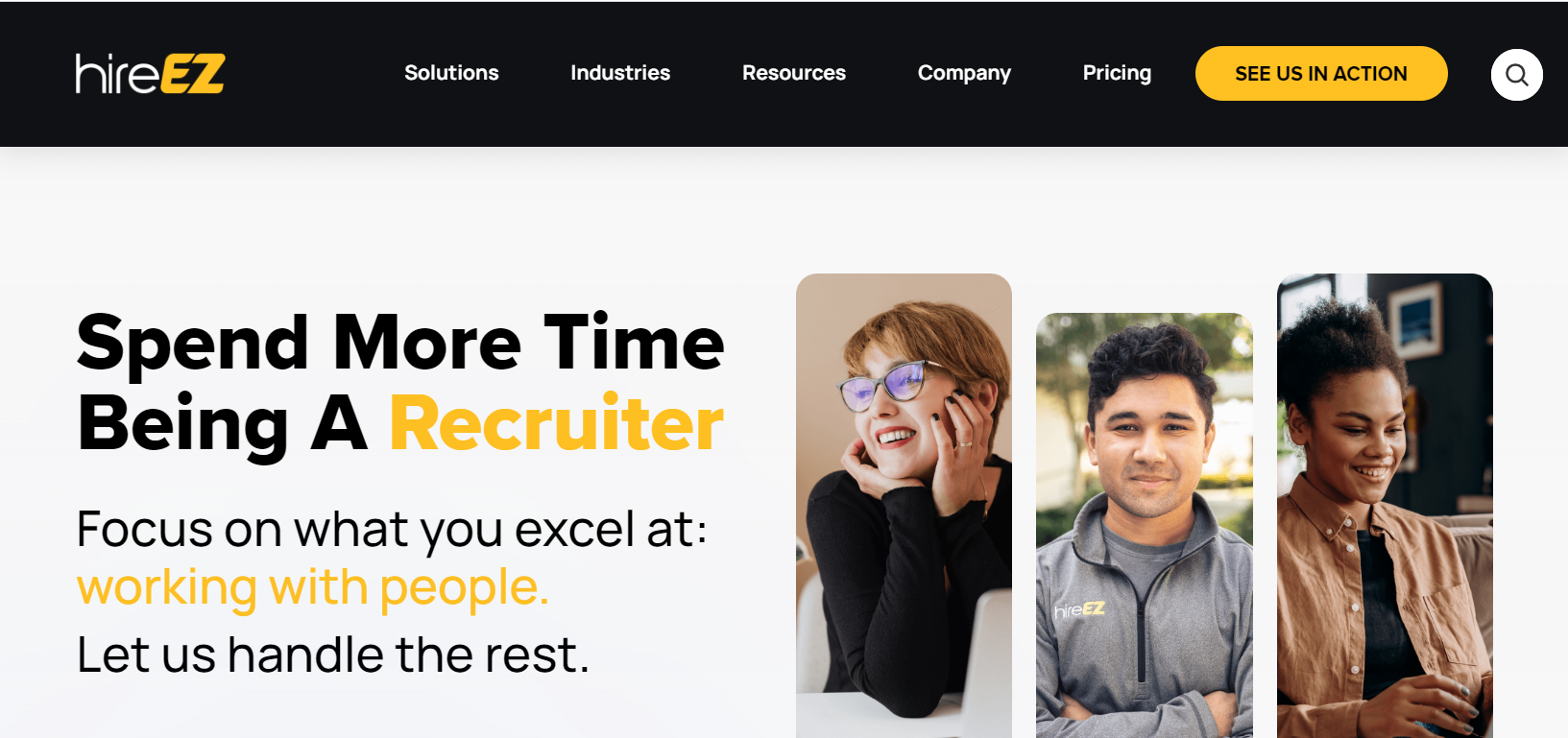
While the hiring process is undoubtedly complex, hireEZ focuses on simplifying it–as its name suggests. The features on offer include resume analysis, tools to assess candidates, and even the ability to post job offers.
11. SourceWhale
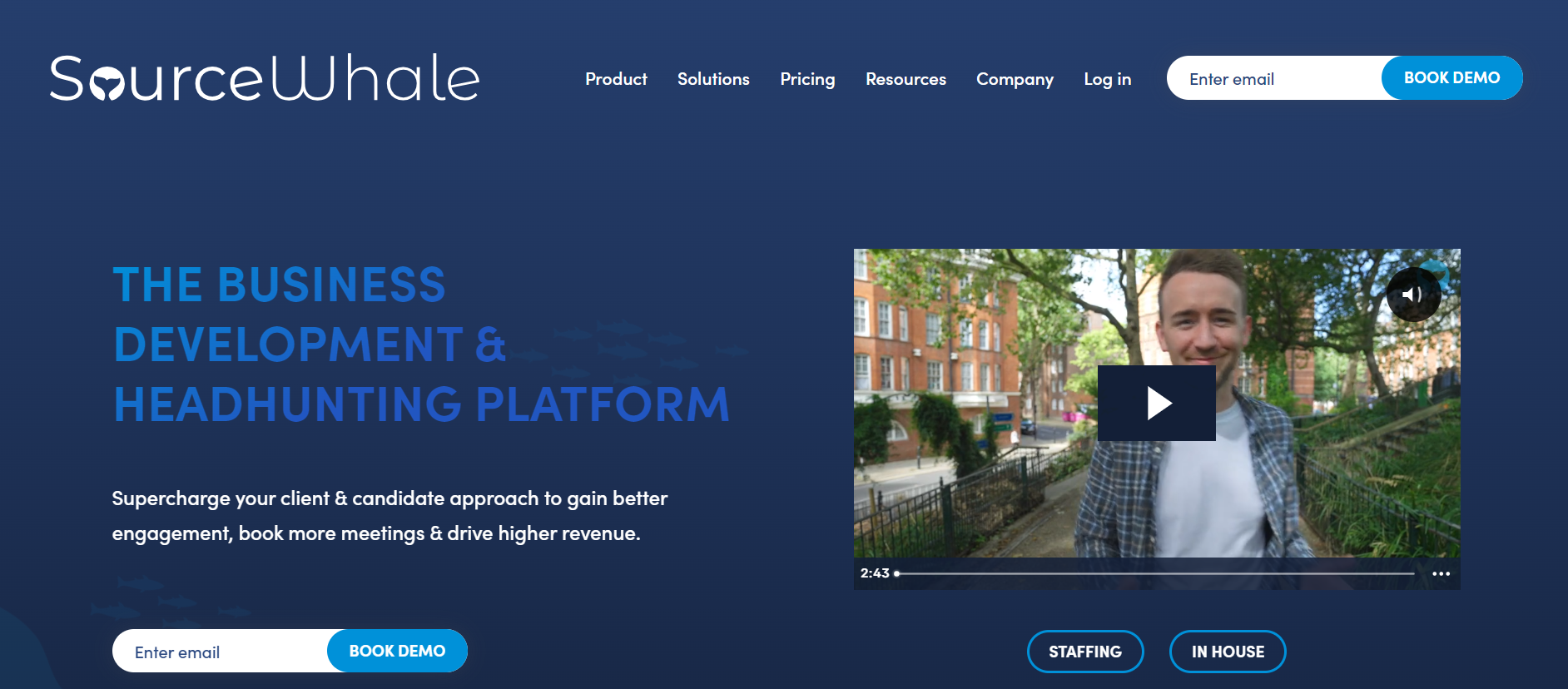
For those who engage in outbound recruiting, SourceWhale is a platform that's dedicated to it.
To support this type of recruiting, you can search for candidates, send out personalised messaging, and more. Finally, if you're engaged in outbound recruiting, you'll need to keep an eye on the results. SourceWhale also has analytics available to give you those insights.
12. Emi
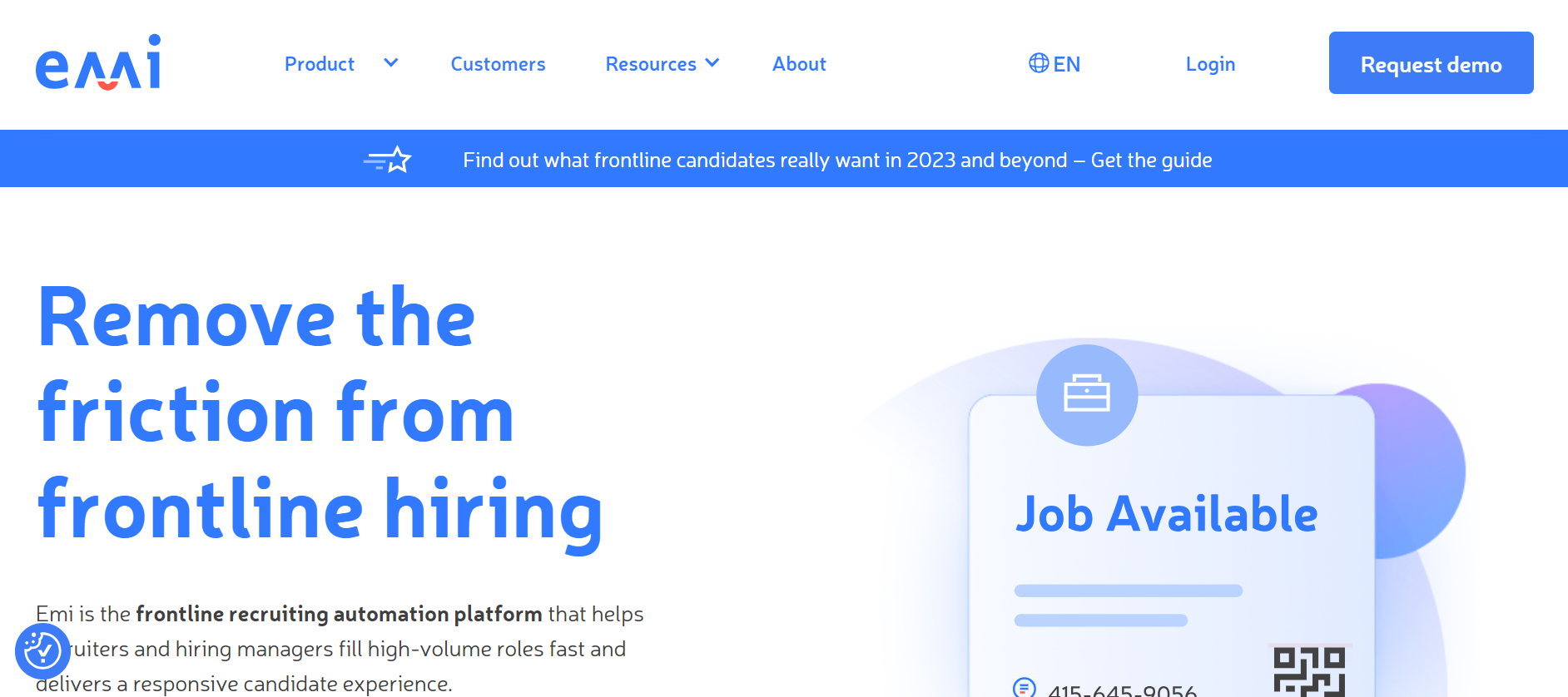
Emi specialises in high-volume hiring, working to streamline the various processes necessary. As such, it will help you with job posting, automated candidate screening, and more.
13. Jobylon

The features included in Jobylon are par for the course: posting job offers, managing candidates in the hiring pipeline, employer branding, and more. But it attempts to differentiate itself from other solutions on the market with a good user experience.
14. HireVue

COVID may be over, but video interviews have certainly stuck around. To respond to this new paradigm, HireVue has created an interview and assessment platform which provides live and pre-recorded videos, complemented by AI-supported assessments, interview scoring, and even analytics.
15. SeekOut

SeekOut positions itself as a recruitment tool that can help you to find the hidden gems not only from the candidate pool at large, but within your own company. Plus, for those looking to increase diversity or fill complex positions, SeekOut offers an AI-based search function that helps isolate candidates with the specificities you'll need.
16. Recruit CRM
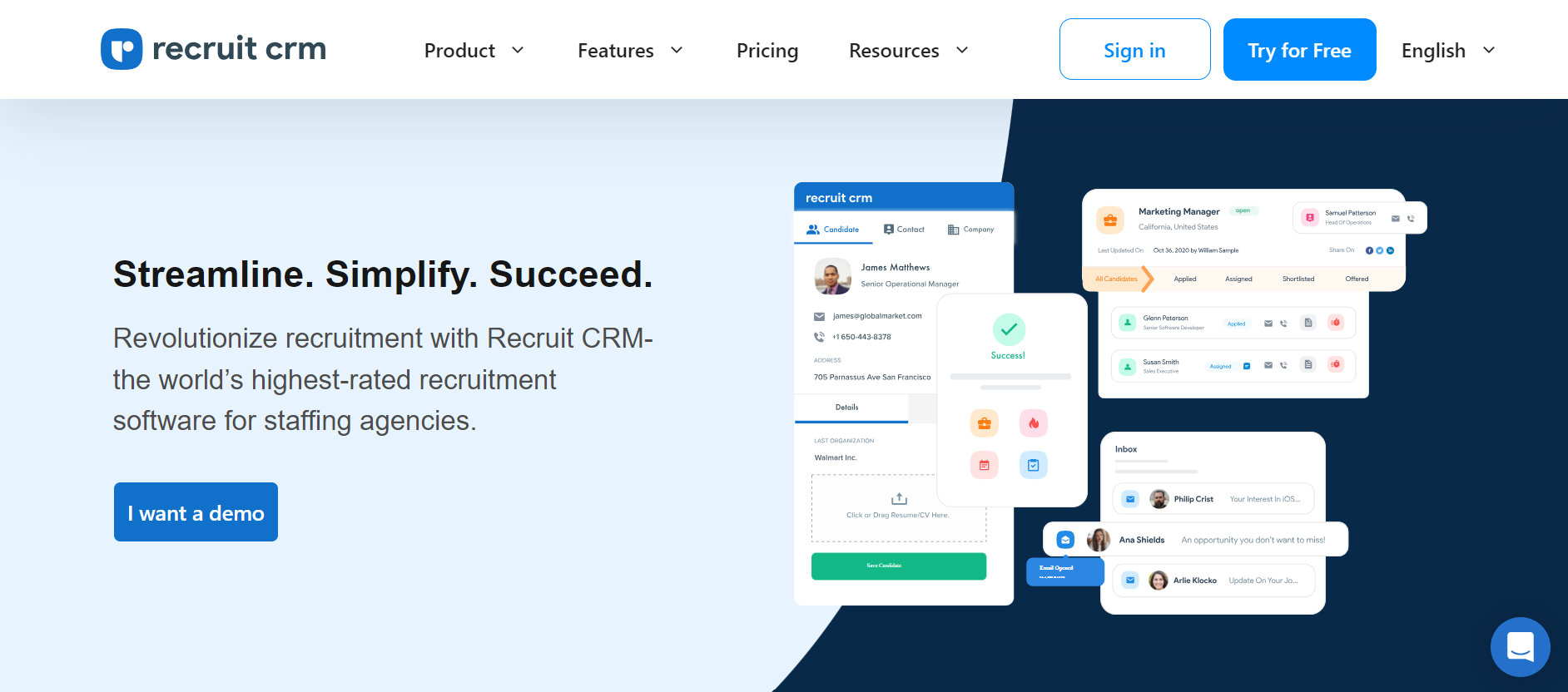
Recruit CRM is a candidate relationship management platform allows you to create workflows and automate various tasks. But in addition to the CRM function, there is also an ATS tool which decreases the amount of manual tasks recruiters are responsible for.
17. TurboHire

If you're looking to turbocharge your outreach to passive candidates, TurboHire can provide you with several tools. There are features to help candidates access information independently, like a chatbot or even one-way interviews. For the recruiters themselves, there are several automations available, including when it comes to candidate scoring and scheduling.
18. Fetcher

Fetcher is a recruiting software which provides multiple automation tools. To help your recruiters save time and have more energy and opportunity for value-add tasks, you can automate tasks like emailing, candidate sourcing, and more.
What is recruiting automation?
Recruiting automation software provides technology to automate recruiting tasks and create workflows, all with the goal of increasing a recruiters' productivity, improving their performance, and accessing global gains like a reduced cost-per-hire. Most of this type of software include features like sequence creation, VoIP phone, applicant tracking systems (ATS), candidate or client relationship management (CRM), job posting, resume parsing, workflow creation, and more.
What are the benefits of automated recruiting?
Automated recruiting has many advantages for recruiters and the company at large. Generally speaking, these benefits include streamlined operations, improved matching between a candidate and company, and money saved during the hiring process.
- Improved productivity: A recruiting automation software automates administrative tasks that, while time-consuming, are often of a low value-add. For example, a software can ensure candidate information is updated across an ATS and CRM. Meanwhile, the recruiter themselves will have more time for high value efforts like relationship building with potential employees.
- Optimised hire quality: Once the software standardises processes and implements technology in the resume parsing and candidate matching process, it helps to find the most qualified candidates quickly and easily. As a result, the candidates will be more likely to succeed in the role.
- Deliver a stellar candidate experience: Candidates' expectations are higher than ever these days, so making sure they are impressed is key to closing the deal. All the small tasks that are difficult for recruiters to stay on top of–like interview scheduling, prompt responses to questions, and more–add up for potential employees.
- Decrease bias: Diminishing bias can be incredibly difficult, especially unconscious bias. That's why relying on technology to stick to an established criteria for resume selection can help. The software increases the possibility of a fair and unbiased process during candidate selection.
- Reduce the time to hire: Somewhat obviously, automating aspects of the hiring process, especially ones that take a lot of time, can reduce the overall hiring cycle length. Even more complex processes like resume screening, background checks, and assessments can be passed off to a recruitment software.
How to use recruiting automation in the hiring process?
- Job advertising. When you need to go through dozens of job platforms to post hundreds of offers, automating that process makes a big difference. You can maximise the visibility of what you currently have on offer, while eliminating a tedious task.
- Applicant tracking. Normally known as applicant tracking systems (ATS), this functionality follows candidates as they process through the hiring pipeline. That includes keeping resumes in a central resume pool that can be drawn on at any time.
- Social recruiting. This is a relatively recent trend in recruiting, in which recruiters leverage social media for various purposes. That could include employer branding, marketing job offers, or even providing candidates the option to submit their resume directly on the platform.
- Candidate pre-screening. For certain positions, an assessment or background check is necessary before the candidate can be hired. Optimising for automated assessments not only saves time, it also increases the objectivity of the assessments.
- Interview scheduling. Though it seems like a small task, when the recruiters are organising interviews with multiple candidates, it takes a great deal of time and attention to detail. By opting for an automated portal where candidates can choose a slot that works for them, a meeting which is then automatically blocked on your calendar.
- Candidate nurturing. When a top-tier applicant is fielding multiple offers, keeping your offer top-of-mind is key. But this is very demanding, both in terms of time and energy. Certain software, like Cadence by Ringover, offer message templates and the possibility to schedule automated sequences. These functions allow you to stay in touch with candidates, and personalise the outreach for a stronger relationship.
- Candidate rediscovery and ranking. Having a talent pool available can make all the difference for your recruiters. That's because you'll have qualified and high-quality candidates at hand once a position opens up, allowing you to start interviewing without having to source new resumes. A recruiting automation software helps you to store the necessary data, and search it once you're in need of applicants.
Recruiting Automation Software FAQ
What is the difference between ATS and recruitment?
Applicant tracking systems (ATS) are a software to support the process of recruitment, which is when companies find and hire employees into open job positions. An ATS is a tool which specifically manages finding, interviewing, screening, and interactions with candidates. Recruitment activities comprise the tasks ATS help with, in addition to relationship building with candidates, offer negotiation, and the final hiring decision. In short, ATS is just a tool which helps simplify recruitment.
What are the three types of recruiting?
The three types of recruiting include:
- Inbound recruiting is when companies take actions to build brand awareness of their employer brand. The point of these activities is to attract candidates and feed their desire to apply to positions and work for your company. They often take the form of social media marketing or content that speaks to the company's employer brand.
- Outbound recruiting refers to what is thought of as “traditional” recruiting, when recruiters contact attractive candidates to solicit their applications. The methods used for outbound recruitment are similar to business development tactics, and include cold calling, attending job fairs, and more recently, outreach on social media.
- Internal recruiting is also called internal mobility–in this type of recruiting, a current employee will move to a new position in the same company. The HR department will identify an employee who is qualified to take on different responsibilities, and invite them to develop their career and competencies by taking on a new role. This approach can have strong positive effects on the company morale, as it communicates to employees the company offers long-term career opportunities.
What is AI recruitment?
AI recruitment is the use of artificial intelligence to support and manage talent acquisition. AI can help with resume parsing, candidate selection, candidate screening and assessment, and the automation of tedious or manual tasks in recruitment, like interview scheduling.
Published on October 8, 2024.

